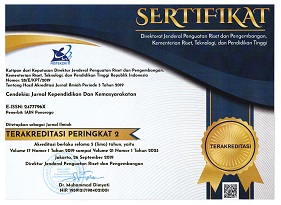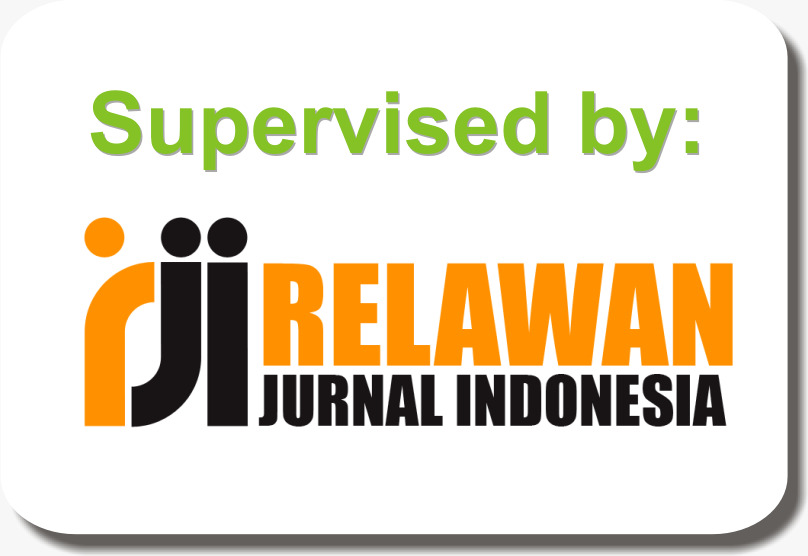The Utilisation of Synchronous and Asynchronous Online Learning Media in Distance Learning in Madrasah Aliyah
DOI:
https://doi.org/10.21154/cendekia.v21i1.5760Keywords:
online learning, synchronous, asynchronous, distance learningAbstract
The use of online learning media, both synchronous and asynchronous, has become part of an interesting phenomenon and deserves attention in today's era of technological development. This study aims to analyse the use of online media in distance learning in Madrasah Aliyah in terms of media utilisation, namely, the aspect of determining media and the aspect of media implementation. This research used descriptive qualitative methods in Madrasah Aliyah Negeri in Ponorogo. Data collection techniques consist of interviews, observation and documentation. The data is analysed using the Miles Huberman model of data reduction, display, and verification. The results of this study are as follows. First, the determination of synchronous and asynchronous online media in the implementation of distance learning in Madrasah Aliyah is carried out through three main points sequentially, namely setting criteria, determining alternative media, and performance in the classroom. Second, the implementation of synchronous and asynchronous online media in the implementation of distance learning in Madrasah Aliyah is carried out in two forms, individually and in combination. Synchronous online media is implemented in virtual face-to-face activities and material deepening. In contrast, asynchronous online media is implemented in practical exercises and assignments. As for presentations, discussions and exams of synchronous and asynchronous online media are implemented combatively.References
Arianto, Fajar, Bachtiar S. Bachri, and Andi Mariono. “Asynchronous Dan Synchronous Learning Pada Pendidikan Tinggi: Studi Komparasi.” Jurnal Ilmiah Mandala Education (JIME) 8, no. 4 (2022): 3008”“12.
Asmuni, Asmuni. “Problematika Pembelajaran Daring Di Masa Pandemi Covid-19 Dan Solusi Pemecahannya.” Jurnal Paedagogy: Jurnal Penelitian Dan Pengembangan Pendidikan 7, no. 4 (2020): 281=288.
Baharun, Hasan. “Learning Effectiveness Improvement Through Mobile Learning.” TOJQI: Turkish Online Journal of Qualitative Inquiry 12, no. 4 (2021): 1662.
Bali, Muhammad Mushfi El Iq, Hasan Baharun, Ahmad Madanibillah, Chusnul Muali, Zamroni, and Abdul Talib Bon. “Innovative Learning Media Based on E-Learning in the New Normal Era.” In IEOM Society International, 11:6987”“93. Singapore: IEOM Society International, 2021.
Belawati, Tian. Pendidikan Terbuka Dan Jarak Jauh. Jakarta: Universitas Terbuka, 1999.
Bogdan, Robert C., and S.J. Taylor. Introduction to Qualitative Research Methods. New York: John Wiley, 1975.
Haryanto, Haryanto, Anik Ghufron, Suyantiningsih Suyantiningsih, and Farida Nur Kumala. “The Correlation between Digital Literacy and Parents’ Roles towards Elementary School Students’ Critical Thinking.” Cypriot Journal of Educational Sciences 17, no. 3 (March 31, 2022): 828”“39. https://doi.org/10.18844/cjes.v17i3.6890.
Heinich, R., and M. Molenda. Instructional Technology for Teaching and Learning: Designing Instruction, Integrating Computers and Using Media. 3rd ed. Upper Saddle River, N.J: Merril Prentice Hall, 1996.
Irawan, Edi, Arif Arif, and Arif Rahman Hakim. Pendidikan Tinggi Di Masa Pandemi: Tramsformasi, Adaptasi, Dan Metamorfosis Menyongsong New Normal. Yogyakarta: Zahir Publishing, 2020.
Ishartiwi, Ishartiwi, Rendy Roos Handoyo, Wening Prabawati, and Adi Suseno. “Special Education Teacher’s Need of Alternative Teaching Materials for Distance Learning for Students with Special Needs.” Jurnal Kependidikan Penelitian Inovasi Pembelajaran 6, no. 2 (November 6, 2022). https://doi.org/10.21831/jk.v6i2.48290.
Jabar, Abi Abdul. “Kemenag Luncurkan Program Transformasi Digital Pendidikan Madrasah.” Madani (blog), September 22, 2020. https://www.madaninews.id/12531/kemenag-luncurkan-program-transformasi-digital-pendidikan-madrasah.html.
Jatmiko, Bakhoh. “Pelatihan Optimalisasi Media Pembelajaran Daring Untuk Menunjang Synchronous Dan Asynchronous Learning System.” International Journal of Community Service Learning 6, no. 1 (March 21, 2022): 20”“29. https://doi.org/10.23887/ijcsl.v6i1.43367.
Mairing, Jackson Pasini, Rhodinus Sidabutar, Elyasib Yunas Lada, and Henry Aritonang. “Synchronous and Asynchronous Online Learning of Advanced Statistics during Covid-19 Pandemic.” JRAMathEdu (Journal of Research and Advances in Mathematics Education) 6, no. 3 (June 29, 2021): 191”“205. https://doi.org/10.23917/jramathedu.v6i3.13477.
Maman, Hasan Baharun, Ramadhan Witarsa, Dewi Tumatul Ainin, Zafrul Hodaili, Mushorfan, and Majid Afnani Wiranata. “Google Classroom as a Distance Learning Tool during a Pandemic.” Journal of Physics: Conference Series 1899, no. 1 (2021): 012176. https://doi.org/10.1088/1742-6596/1899/1/012176.
Mason, Robin, and Frank Rennie. Elearning:Panduan Lengkap Memahami Dunia Digital Dan Internet. Translated by Teguh Wahyu Utomo. Yogyakarta: BACA, 2010.
Miles, Matthew B., and A.S.Michael Huberman. Analisis Data Kualitatif, Terj. Tjetjep Rohendi Rohidi. Jakarta: UI Press, 1992.
Moleong, Lexy J. Metologi Penelitian Kualitatif. Edisi Revisi; Cetakan ketiga puluh delapan. Bandung: PT Remaja Rosdakarya, 2018.
Mubarok, Ahmad Agis. “Musyawarah Dalam Perspektif Al-Quran.” MAGHZA: Jurnal Ilmu Al-Qur’an Dan Tafsir 4, no. 2 (December 23, 2019): 147”“60. https://doi.org/10.24090/maghza.v4i2.3550.
Munir. Pembelajaran Jarak Jauh Berbasis Teknologi Informasi Dan Komunikasi. Bandung: Alfabeta, 2012.
Sadikin, Ali, and Afreni Hamidah. “Pembelajaran Daring Di Tengah Wabah Covid-19.” BIODIK: Jurnal Ilmiah Pendidikan Biologi 6, no. 2 (2020).
Sarwa. Pembelajaran Jarak Jauh: Konsep, Masalah Dan Solusi. Jakarta: CV.Adanu Abimata, 2021.
Shodiq, Imam Ja’far, and Husniyatus Salamah Zainiyati. “Pemanfaatan Media Pembelajaran E-Learning Menggunakan Whastsapp Sebagai Solusi Ditengah Penyebaran Covid-19 Di MI Nurul Huda Jelu.” Al-Insyiroh: Jurnal Studi Keislaman 6, no. 2 (September 7, 2020): 144”“59. https://doi.org/10.35309/alinsyiroh.v6i2.3946.
Singh, Jitendra, Keely Steele, and Lovely Singh. “Combining the Best of Online and Face-to-Face Learning: Hybrid and Blended Learning Approach for COVID-19, Post Vaccine, & Post-Pandemic World.” Journal of Educational Technology Systems 50, no. 2 (December 2021): 140”“71. https://doi.org/10.1177/00472395211047865.
Siregar, Zakaria, and Topan Bilardo Marpaung. “Pemanfaatan Teknologi Informasi Dan Komunikasi (TIK) Dalam Pembelajaran Di Sekolah” 3, no. 1 (2020): 61”“69.
Stake, Robert E. Qualitative Research: Studying How Things Work. New York: Guilford Press, 2010.
Sudarti, Sudarti, Rusman Rusman, Dadang Sukirman, and Cepi Riyana. “The Effectiveness of Digital Literacy Training to Improve Early Childhood Education Teacher’s Competence.” European Online Journal of Natural and Social Sciences 11, no. 3 (2022): 553”“65.
Suparmi, Suparmi, Siti Partini Suardiman, and C. Asri Budiningsih. “The Pupil’s Creativity Is Inspired by Experience through Electronic Media: Empirical Study in Yogyakarta.” International Journal of Instruction 13, no. 2 (April 1, 2020): 637”“48. https://doi.org/10.29333/iji.2020.13243a.
Susanto, Susanto, Evi Muafiah, Ayu Desrani, Apri Wardana Ritonga, and Arif Rahman Hakim. “Trends of Educational Technology (EdTech): Students’ Perceptions of Technology to Improve the Quality of Islamic Higher Education in Indonesia.” International Journal of Learning, Teaching and Educational Research 21, no. 6 (2022): 226”“46. https://doi.org/10.26803/ijlter.21.6.14.
Syaefudin, Udin Sa’ud. Inovasi Pendidikan. Bandung: Alfabeta, 2014.
Tauhidah, Dian, Ummi Nur Afinni Dwi Jayanti, Amining Rahmasiwi, Rahmania Pamungkas, and Ahmad Saifulloh. “Utilization of E-Learning Platforms by Lecturers during the COVID-19 Pandemic in Indonesia.” JPBI (Jurnal Pendidikan Biologi Indonesia) 7, no. 3 (2021): 198”“207. https://doi.org/10.22219/jpbi.v7i3.16816.
Yulianti, Yuli, and Yani Kusmarni. “Sinkronus Vs Asinkronus Pembelajaran Sejarah Daring: Studi Korelasional Di SMA Kota Bandung.” FACTUM: Jurnal Sejarah Dan Pendidikan Sejarah 10, no. 2 (October 30, 2021): 135”“46. https://doi.org/10.17509/factum.v10i2.39019.
Downloads
Published
Issue
Section
License
Copyright & License
Please find the rights and licenses in Cendekia: Jurnal Kependidikan dan Kemasyarakatan. By submitting the article/manuscript, the author(s) agree with this policy. No specific document sign-off is required.
1. License
The non-commercial use of the article will be governed by the Creative Commons Attribution license as currently displayed on the Creative Commons Attribution-NonCommercial 4.0 International License.
2. Author(s)' Warranties
The author warrants that the article is original, written by the stated author(s), has not been published before, contains no unlawful statements, does not infringe the rights of others, is subject to copyright that is vested exclusively in the author and free of any third party rights, and that any necessary written permissions to quote from other sources have been obtained by the author(s).
3. User/Public Rights
The spirit of Cendekia: Jurnal Kependidikan dan Kemasyarakatan is to disseminate articles published as free as possible. Under the Creative Commons license, Cendekia: Jurnal Kependidikan dan Kemasyarakatan permits users to copy, distribute, display, and perform the work for non-commercial purposes. Users will also need to attribute authors and Cendekia: Jurnal Kependidikan dan Kemasyarakatan on distributing works in the journal and other media of publications. Unless otherwise stated, the authors are public entities as soon as their articles got published.
4. Rights of Authors
Authors retain all their rights to the published works, such as (but not limited to) the following rights;
- Copyright and other proprietary rights relating to the article, such as patent rights,
- The right to use the substance of the article in own future works, including lectures and books,
- The right to reproduce the article for own purposes,
- The right to self-archive the article,
- The right to enter into separate, additional contractual arrangements for the non-exclusive distribution of the article's published version (e.g., post it to an institutional repository or publish it in a book), with an acknowledgment of its initial publication in this journal (Cendekia: Jurnal Kependidikan dan Kemasyarakatan).
5. Co-Authorship
If the article was jointly prepared by more than one author, any author submitting the manuscript warrants that he/she has been authorized by all co-authors to be agreed on this copyright and license notice (agreement) on their behalf and agrees to inform his/her co-authors of the terms of this policy. Cendekia: Jurnal Kependidikan dan Kemasyarakatan will not be held liable for anything arising due to the author(s) internal dispute. Cendekia: Jurnal Kependidikan dan Kemasyarakatan will only communicate with the corresponding author.
6. Royalties
Being an open accessed journal and disseminating articles for free under the Creative Commons license term mentioned, the author(s) are aware that Cendekia: Jurnal Kependidikan dan Kemasyarakatan entitles the author(s) to no royalties or other fees.
7. Miscellaneous
Cendekia: Jurnal Kependidikan dan Kemasyarakatan will publish the article (or have it published) in the journal if the article's editorial process is completed. The editors of Cendekia: Jurnal Kependidikan dan Kemasyarakatan may modify the paper to a style of punctuation, spelling, capitalization, referencing, and usage that deems appropriate. The author acknowledges that the article may be published so that it will be publicly accessible, and such access will be free of charge for the readers, as mentioned in point 3.

















